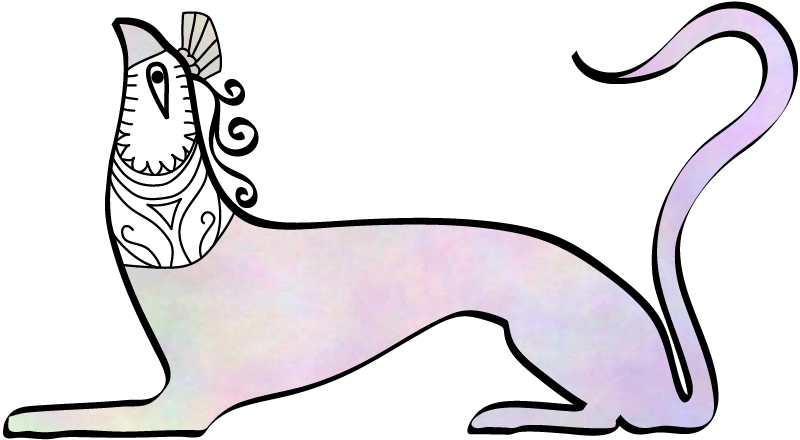The December 2025 issue of Nestor (52.12) is available as a free download.

Latest
Michael Ventris Award
On 1 February 2026 applications are due for the Michael Ventris Award for Mycenaean Studies for 2026 (up to £4,000), to be awarded to scholars who have obtained a doctorate within the past eight years or postgraduate students about to complete the doctorate in the field of Mycenaean civilization or kindred subjects, to promote research in (1) Linear B and other Bronze Age scripts of the Aegean and Cyprus, and their historical and cultural connections and (2) all other aspects of the Bronze Age of the Aegean and Cyprus. Further information, including detailed application instructions, is available at https://ics.sas.ac.uk/awards/awards-prizes/michael-ventris-award-mycenaean-studies-2026.
Women in the Archaeology of Greece
On 31 December abstracts (300 words maximum) due for the fourth workshop on Women in the Archaeology of Greece, to be held in hybrid format by the École française d’Athènes and the British School at Athens on 9-10 March 2026, focused on the theme of Women Archaeologists and War. Further information is available at https://www.efa.gr/call-for-papers-women-archaeologists-and-war/.
PeClA 2025
On 1-2 December 2025 the 10th International Postgraduate Conference Perspectives on Classical Archaeology: Finis Vitae – Multidisciplinary Approaches to Death, Burial and Afterlife in the Ancient World (PeClA 2025) will be held at Charles University in Prague, Czech Republic. Further information is available at https://ukar.ff.cuni.cz/en/pecla-2025-finis-vitae-multidisciplinary-approaches-to-death-burial-and-afterlife-in-the-ancient-world/. Papers of interest to Nestor readers will include:
A. Fatsi, “What Could Have Been: Childhood, Identity and Mortuary Practice in Mycenaean Greece”
D. Papageorgiou, “Shifting Burial Practices and Social Relations in Palaepaphos During the Late Bronze Age”
J. Ondrášik, “Selected Problems in the Cemeteries of Late Bronze Age Crete”
V. Meyer, “A Matter of Shape: Gender and Sex-Related Grave Markers in Geometric Attica - Evidence from Kraters and Amphorae”
L. Girella, “An Almost Untold Story. Funerary and Burial Practices in the Bronze Age”
T. Tsempera, “Life and Death at the Edge: Biocultural Adaptation in the Liminal Environment of Bronze Age Samikon”
NYABC
On 16 December 2025 R. Worsham will address the New York Aegean Bronze Age Colloquium on “Designing Community: Architectural Integration at Malthi.” Registration is available at https://nyabac.tumblr.com/.
AIA 2026
On 7-10 January 2026 the Annual Meeting of the Archaeological Institute of America (AIA 2026) will be held in San Francisco, California. Further information is available at http://www.archaeological.org. Papers and posters of interest to Nestor readers will include:
K. A. Jazwa, “Constructing Early Helladic Askitario”
T. Van Damme, “Two Late Bronze Age Double Pit Graves from the Athenian Agora”
N. Abell, J. Baxley Craig, L. Alberti, and C. Weber, “No Need to BYOC: An Analysis of Handleless Cups, Tripod Cookpots, and Commensality at Bronze Age Ayia Irini, Kea”
S. Cushman, “A Picture is Worth a Thousand Words: Mycenaean Pictorial Pottery as a Social Strategy”
T. M. S. Nash, “Rethinking Mycenaean Palaeography”
I. Tewksbury, “The Damos at Ancient Pylos: The Case for Marx’s ‘Primitive’ Communism”
J. Earle, “Squatters in the Mansion: The LH IIIC Late Reoccupation Phase at Koukounaries, Paros
A. A. Davis, “Reconsidering Nichoria: Continuity from the Late Bronze Age to the Early Iron Age”
E. Papadopoulou, “The New Archaeological Museum at Chania in Crete: A Reservoir of Knowledge and Experiences”
T. F. Strasser, A. Darlas, and M. Clinton, “The Excavation at Megalos Peristeres Cave (Crete): A Preliminary Report”
G. Paglione and P. Sabattini, “Shaking Earth, Shaking Sea: The Theran Eruption and the Making of a Tsunami God”
A. Crowe, “Knossos in the Final Palatial and Postpalatial Periods: Investigating the Decline of an Urban Landscape”
R. Trepagnier, “Using the Archive as Subject: The Cases of the North-East House and the North Pillar Crypt at Knossos”
L. Lomax, “Mycenaean Regionalism: Late Helladic III Ceramic Distribution in Palatial Versus Non-Palatial Contexts”
D. R. Fisher, “Quantifying the ‘Rich Female Grave’: Grave Good Wealth in Iron Age and Early Archaic Period Athens”
J. C. Langlois, “Visualizing Power: Experiencing the Elite Landscape of Late Helladic I Mitrou in VR”
A. Van de Moortel, A. Iacobelli, and N. Lissarrague, “New Funerary Tumuli at Mitrou, Central Greece”
T. Krapf, S. Chryssoulaki, L. Vokotopoulos, S. Michalopoulou, and J. André, “Hellanion Oros on Aegina, between Refuge Site and Peak Sanctuary: Excavation and Survey 2021-2025”
S. Lupack, P. Kasimi, B. Weissova, S. James, and M. Skuse, “Perachora Peninsula Archaeological Project 2025: Closer Study of the Landscape around the Sanctuary of Hera”
W. Parkinson, C. A. M. Gardner, R. Seifried, S. Dunn, P. Sapirstein, S. Murray, and M. Snyder, “Southern Mani Archaeological Project 2025: Porto Kagio”
F. Gaignerot-Driessen, “Women and the City: Some Thoughts on the Significance of the Female Terracottas from Anavlochos, Crete”
A. Pierattini and D. E. Schiavazzi, “Integrating Uncertainty in the Reconstruction of Archaeological Buildings: A Monte Carlo Analysis of the Toumba Building at Lefkandi”
S. Norvell, “From Territorial Claims to Affective Encounters: Rethinking Tomb Cult in Early Iron Age Crete”
7th LBA/EIA Aegean ECR mini-conference
On 27 November 2025, the seventh mini-conference of the Late Bronze Age/Early Iron Age Aegean Early Career Research Group was held online. Further information is available from
L. Alvarez “Understanding ‘ritual’ symbols of the Minoan period through the body”
D. Grant, “Bronze Age and Early Iron Age Commercial and Navigation Networks: Artefact Based v Simulations”
M. Kokkalia, “Late geometric and archaic storage vases (pithoi) in the Cyclades: typology, uses and contexts”
R. Trepagnier, “Using the Archive as Subject: The Cases of the North-East House and the North Pillar Crypt at Knossos”
P. Koutsouris, “Negotiated Landscapes: Uneven Territorial Integration in the LH IIIB Argolid and Corinthia”
S. Lidwell-Durnin, “Exercising Power at Knossos: The Captain of the Blacks and Imperial Preconceptions”
